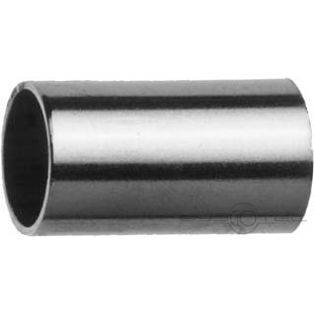- Special Offers
- Transceiver Radio
- Transceiver Accessory
- Antennas
- Antenna Accessory
- Cable
- Connector
- Antenna Coax Connector
- RF Antenna Connector Assembly
- Cigarette Lighter Connector
- AC Cable
- DC Connector
- Jack Connector
- Microphone Connector
- RCA Connector
- RJ Connector
- Cable Strain Relief
- TV Wall Socket
- Installation Material
- Installation Tools
- Measuring Equipement
- Electrosmog
- Telephone
- Baby Monitor
- Fever Thermometer
- Radio Device
- Set-top Boxes
- Personal Protective Equipment
- Motorcycle Helmet Speaker
- Car Equipment
- Voltage Converter
- Dry Cell
- Battery
- Battery Charger
- Emergency Signal
- Amber Signal
- Sound Signal
- Light and Sound Signal Accessory
- Traffic Engineering
- LED Lamp
- Smart Home
- Mosquito Repellent Device
- Market - Other Products
- Discontinued Products
Pre-order (0)
RF Antenna Connector Assembly
Radio frequency connectors are divided into two categories. Some can be mounted on the outside of the equipment and some are used inside the enclosure. RF connectors used for splicing can accommodate mostly thicker coaxial cables, and this provides some level of load shedding, as well as interconnecting plugs and sockets. Read more...
Pre-order (0)
• Crimp sleeve for RG-58 and Aircell 5 connectors
• C20640G1009
• Crimp sleeve for RG-58 and Aircell 5 connectors
• C20750G1009
.
What applications can RF antenna connector assemblies be used for?
They are used for testing and measurement, communication systems, GPS equipment, and for connecting antennas. In the case of communication systems, mention should be made of Wi-Fi, Bluetooth, mobile communications or ISM applications that use frequencies between 400 MHz and 3.4 GHz.
What are the differences between the different types of RF antenna connectors and how can they affect performance?
As with most connectors, RF antenna connector assemblies, or crimp contacts, are specified by gender and can usually be connected to a limited number of coaxial cable types. It is important to note that the maximum operating frequency of a connector is tens of GHz. However, when selecting connectors, care must be taken to consider both the insertion loss characteristics and the power handling capacity.
For which frequencies and characteristics are the different RF antenna connector assemblies recommended?
Classic connectors such as BNC, which is an abbreviation for Bayonet Neil-Concelman, are available in 50 and 75 Ω versions. The latter is recommended for video and television. But there is also a choice of many other modern connectors for higher frequency, more compact applications. What are they? The most popular are the SMA, SMB, SMP, MMX and MMCX families of connectors, all of which have a standard 50 Ω RF impedance.
All offer a wide combination of electrical and mechanical features. For example, the SMA series subminiature coaxial connectors are equipped with threaded coupling technology. The SMB versions are designed for broadband connectivity from DC up to 4 GHz.
SMP attachable connectors can be used in applications up to 40 GHz. MCX surface mount card edge sockets are suitable for devices up to 1.6 mm thick. But don't forget about the MMCX connectors, which are smaller than the previously mentioned versions and have a snap-in mechanism.
Is there a checklist to help you make sure that your RF antenna connector will fit your device?
Yes, manufacturers will specify what the connector, crimp sleeve has and what we can connect it to.
The material of RF antenna connectors and its quality
The correct design of the RF antenna connector and its proper connection and application will determine the quality of the antenna. However, before use, check that the crimp sleeve is RoHS certified. Why is this necessary? EU Directives 2011/65/EU and 2015/863 restrict the use of certain materials in the manufacture of certain types of electrical equipment.
While this restriction does not legally apply to connectors, for example, the fact is that the 'compliance' of components is important to many of us. In addition, it is worth paying attention to what materials the RF connector is made of. For example, the contact material may be made of brass, stainless steel, the plating of the contact may be gold, the housing of the connector may be nickel, and these details will all largely determine the quality of the crimp sleeve.
How to optimize the performance of the RF antenna connector assembly for a given environmental condition?
In terms of environmental conditions, it is important to consider the conditions under which the antenna will operate. If it is installed outdoors, both the antenna and the connector should be waterproof and UV-resistant to avoid damage from rain or sunlight. Similarly, in an industrial environment, the antenna connector may need to withstand dust, grease or vibration. Therefore, selecting the right RF antenna connector, or crimp sleeve, is key to ensuring long antenna life and reliability.
Any special tools required to correctly install the RF antenna connector assembly?
When working with the crimp sleeve, Aircell 5 connector cable, also known as the RF adapter, you will need hand or mechanical crimping tools. For larger cross section connectors, a tool driven by a hydraulic actuator is required. But for flexibility, you'll also need a cable cutter, crimping pliers, ferrule pliers or cable strippers to work with the cable.
In our webshop you can choose from a variety of RF antenna components for different cables, for professional cable making.


